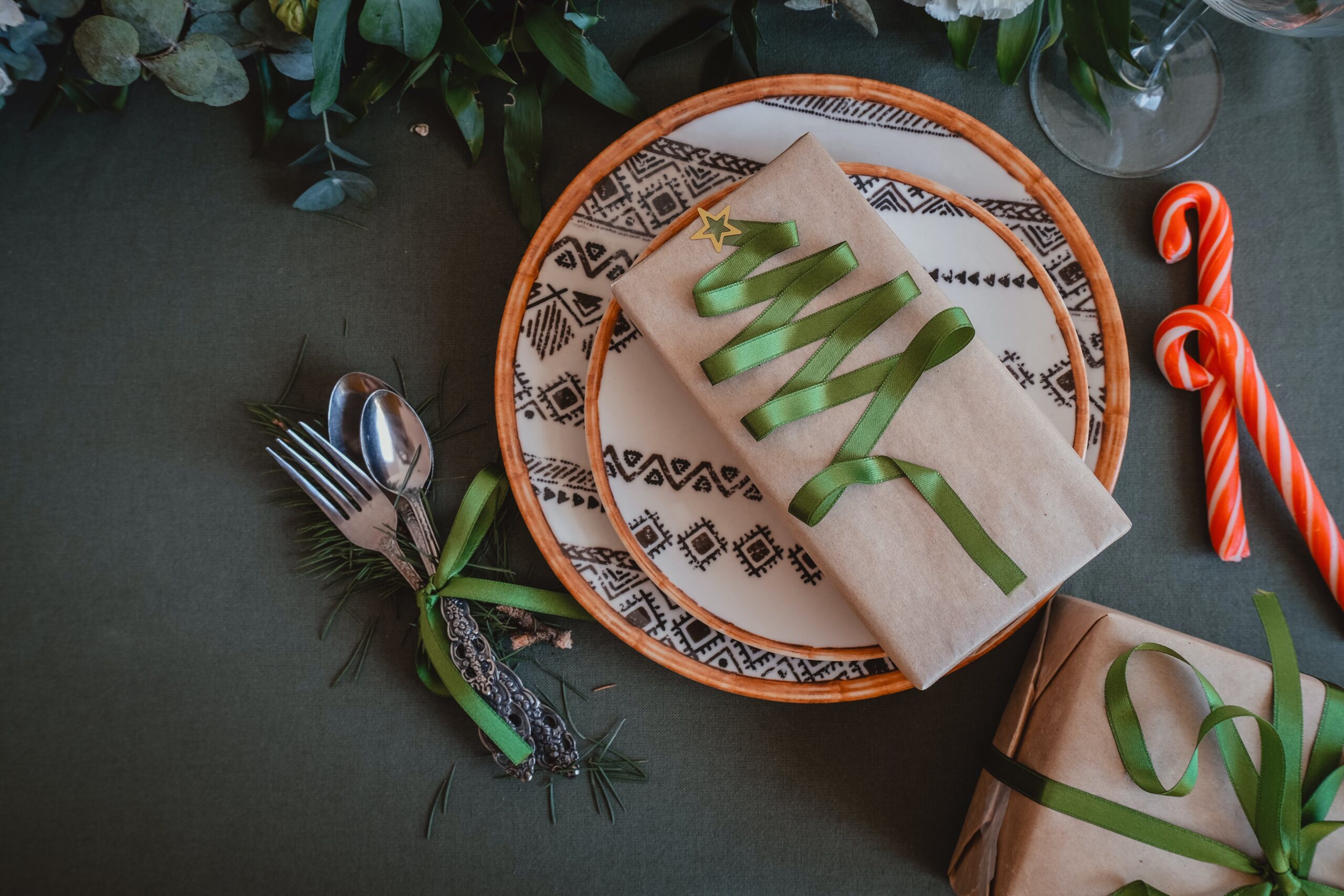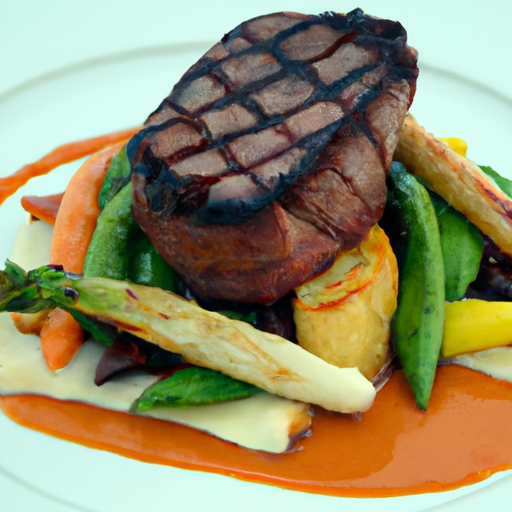Transform your culinary creations into visual masterpieces with the art of plating. In the world of gastronomy, presentation plays a vital role in enhancing the overall dining experience. With the right techniques, you can elevate your dishes from merely delicious to utterly captivating. At Tastepan.com, we have curated a collection of mouthwatering recipes that will inspire and guide you on your plating journey. Discover the secrets of arranging textures, colors, and flavors to create stunning plates that will leave your guests in awe. Join us as we explore the art of plating and unlock the potential to turn each meal into a work of art.

Importance of Plating
Plating is a crucial aspect of any culinary masterpiece, as it not only adds visual appeal to a dish but also enhances the entire dining experience. A well-plated dish can transform a simple meal into a visual feast, captivating both the eyes and the taste buds. The art of plating involves careful consideration of balance, proportion, contrast, harmony, color, texture, and the overall design elements. By paying attention to these key factors, chefs can elevate their dishes to another level and leave a lasting impression on their diners.
Creating a Visual Feast
Plating is like creating a work of art on a blank canvas – the plate. Chefs have the opportunity to arrange and present their culinary creations in enticing and visually pleasing ways. By combining various techniques and elements, they can create a visual feast that stimulates all the senses. From the moment the dish is placed in front of the diner, they are immediately drawn to the beautiful arrangement, igniting their anticipation and excitement for the flavors to come.
Enhancing the Dining Experience
Plating goes beyond aesthetics; it also plays a vital role in enhancing the overall dining experience. When a dish is thoughtfully and artfully plated, it sets the tone and expectation for the meal. The presentation can evoke certain emotions and create a sense of anticipation. Each component on the plate is carefully placed to complement one another, ensuring that every bite is a harmonious blend of flavors and textures. When the dish is visually appealing, it not only satisfies the taste buds but also pleases the eyes, making the dining experience more memorable and enjoyable.
General Principles
When it comes to plating, there are several general principles that chefs should keep in mind to create visually stunning dishes.
Balance and Proportion
Balance and proportion are essential in achieving a visually pleasing plate. Components should be distributed evenly, ensuring that no single element overwhelms the rest. By considering the size, shape, and quantity of each component, chefs can create a harmonious balance on the plate. Achieving balance doesn’t mean every part of the dish needs to be identical; rather, it means finding a visual equilibrium that satisfies the eye.
Contrast and Harmony
Contrast is key to creating visual interest on a plate. By combining ingredients with contrasting textures, colors, and flavors, chefs can create a dynamic and captivating dish. For example, pairing a crispy element with something soft or incorporating a tangy sauce with a rich, creamy component can create a delightful contrast. However, while contrast is important, it is equally essential to maintain harmony. The different elements on the plate should complement each other and work together to create a cohesive and delicious dish.
Color and Texture
Color and texture are powerful tools in plating. Vibrant and eye-catching colors can instantly elevate a dish, making it visually appealing and enticing. Chefs can use a color wheel to guide their color selection, considering complementary or monochromatic schemes. Alongside color, texture also plays a significant role in plating. Incorporating different textures, such as crunchy, smooth, or crispy components, adds depth and interest to the dish, enhancing the overall experience for the diner.

Design Elements
Consideration should be given to the design elements when plating a dish. These elements include plate shape and size, negative space, and garnishes.
Plate Shape and Size
The choice of plate shape and size can greatly impact the presentation of a dish. The plate should complement the shape and size of the components, allowing them to stand out and shine. A larger plate may be suitable for plates with multiple components, while a smaller plate can create a more intimate and focused presentation. Additionally, selecting plates with unique or asymmetrical shapes can add an element of intrigue and artistry to the overall design.
Negative Space
Negative space, also known as white space, is the empty area on the plate that surrounds the food. Leaving sufficient negative space helps to highlight the main components and create a clean and elegant presentation. It also provides a visual break for the eyes, allowing the diner to appreciate each element without overcrowding the plate. Chefs should embrace negative space as a design element and use it to their advantage when plating.
Garnishes
Garnishes are the final touch to a beautifully plated dish. They add visual appeal, texture, and often additional flavors to the overall composition. Edible flowers and herbs are popular garnishes that bring a pop of color and freshness. Microgreens and sprouts can add a delicate touch and provide a contrast in texture. Citrus zest or caviar can bring a burst of flavor and elevate the dish with a luxurious touch. Garnishes should be carefully chosen to enhance the dish’s presentation without overpowering the main components.
Plate Composition
The composition of a dish refers to the arrangement and layering of its components on the plate. It involves building layers, arranging components, and creating focal points.
Building Layers
Layering is an effective technique to add dimension and visual interest to a plate. By stacking elements or placing them at different heights, chefs can create a multi-dimensional presentation. For example, layering a bed of vegetables with a protein on top can add depth and make the dish visually appealing. It also allows diners to experience different flavors and textures with each bite.
Arranging Components
The arrangement of components on the plate can make or break the plating. Chefs should consider how each element interacts with one another and strategically position them for the best effect. The positioning should be deliberate and purposeful, creating a sense of movement and flow on the plate. It is essential to strike a balance between aesthetics and practicality, ensuring that the dish is visually pleasing while still being easy to eat.
Focal Points
A focal point is a visually dominant element that draws the diner’s attention. It serves as the anchor of the dish and sets the tone for the overall composition. By creating a focal point, chefs can guide the diner’s eyes and highlight the star component of the dish. This can be achieved through positioning, size, or even using contrasting colors or textures. The focal point should command attention while still maintaining a cohesive overall presentation.

Plating Techniques
Plating techniques are the methods and approaches used to arrange and present the components on the plate. Here, we will explore stacking, juxtaposition, and how sauces and drizzles can enhance the visual appeal.
Stacking
Stacking is a popular technique that involves layering the components vertically. It adds height and creates an elegant and modern presentation. Different ingredients can be stacked to create contrast in color, texture, and flavor. For example, alternating layers of roasted vegetables and seared scallops can create a visually striking dish. Stacking allows chefs to showcase each component individually while still maintaining an overall cohesive look.
Juxtaposition
Juxtaposition is the art of placing contrasting elements side by side to create visual interest. By combining ingredients with different colors, textures, or shapes, chefs can create a visually striking presentation. For example, juxtaposing bright green asparagus spears with vibrant red cherry tomatoes can create a visually appealing contrast. Juxtaposition can create a sense of excitement and surprise on the plate, engaging the diner’s curiosity and enhancing their dining experience.
Sauces and Drizzles
Sauces and drizzles are not only flavorful additions to a dish but also powerful plating tools. Chefs can use sauces to add color, texture, and design elements to the plate. A carefully placed drizzle of sauce can guide the diner’s eyes and create movement across the plate. Whether it’s a vibrant red tomato sauce or a delicate white béchamel, sauces and drizzles can elevate the visual appeal of a dish and add the finishing touch to the plating.
Color Selection
Color selection in plating is an important consideration to create visually appealing and harmonious dishes. Here, we will explore using a color wheel, contrasting warm and cool colors, and monochromatic schemes.
Using a Color Wheel
A color wheel is a useful tool that can guide chefs in selecting complementary or contrasting colors for their plating. It consists of primary, secondary, and tertiary colors, along with their respective shades and tints. By understanding color theory and the relationships between colors on the wheel, chefs can create visually pleasing and harmonious compositions. For example, pairing a warm orange carrot puree with a cool green herb salad can create a visually striking contrast.
Contrasting Warm and Cool Colors
Contrasting warm and cool colors is another effective way to create visual interest on the plate. Warm colors, such as red, orange, and yellow, can evoke feelings of energy and excitement. Cool colors, such as blue, green, and purple, create a sense of calm and relaxation. By combining warm and cool colors in the plating, chefs can create a dynamic and visually pleasing dish. For example, pairing a vibrant red beet puree with a cool green pea shoot salad can create a visually striking contrast.
Monochromatic Schemes
Monochromatic schemes involve using different shades and tints of a single color in the plating. This creates a sense of harmony and unity on the plate. By varying the intensity of the color, chefs can create depth and visual interest. For example, a dish that incorporates various shades of brown, from a dark chocolate sauce to a light caramel drizzle, can create a visually appealing monochromatic presentation. Monochromatic schemes can be subtle and elegant, creating a cohesive and sophisticated plating.
Texture and Height
Texture and height are two crucial elements in plating that can enhance the overall visual appeal of a dish. Here, we will explore incorporating different textures and creating verticality on the plate.
Incorporating Different Textures
Incorporating different textures adds depth and complexity to a dish. By combining ingredients with contrasting textures, such as crispy, creamy, or crunchy, chefs can create a visually interesting and engaging plate. Texture creates a sensory experience, stimulating not only the eyes but also the taste buds. For example, pairing a creamy cauliflower puree with a crispy breadcrumb topping can create a delightful clash of textures on the plate. The variety of textures adds excitement and intrigue, making the dish more visually appealing.
Creating Verticality
Creating verticality is an effective technique to add height and visual impact to a plate. By stacking or arranging components in a vertical manner, chefs can create a sense of drama and elegance. Vertical presentation draws the diner’s attention and creates a focal point. For example, arranging thin slices of grilled zucchini in a towering formation can create a visually striking presentation. The height adds interest and elevates the overall plating, making it visually appealing and memorable.
Garnishing
Garnishes are the final touch to a beautifully plated dish, adding a finishing flourish and enhancing its visual appeal. Here, we will explore the use of edible flowers and herbs, microgreens and sprouts, and citrus zest and caviar as garnishes.
Edible Flowers and Herbs
Edible flowers and herbs are popular garnishes that bring beauty, color, and freshness to a plate. They add a touch of elegance and can elevate the visual appeal of any dish. Pansies, nasturtiums, and lavender are just a few examples of edible flowers that can be used to adorn a plate. Herbs such as cilantro, basil, or mint can also be used to add a burst of flavor and visual interest to a dish. Garnishing with edible flowers and herbs creates a vibrant and visually appealing presentation.
Microgreens and Sprouts
Microgreens and sprouts are delicate and flavorful additions that can bring texture and visual interest to a dish. Their vibrant colors and tender leaves can add a pop of freshness to any plate. From micro basil to sunflower sprouts, these tiny greens can be strategically placed to create visual contrast and enhance the overall composition. Microgreens and sprouts not only add visual appeal but also provide a burst of flavor and a delightful crunchy texture.
Citrus Zest and Caviar
Citrus zest and caviar are luxurious garnishes that can add a touch of elegance and sophistication to a dish. Citrus zest, whether it be lemon, lime, or orange, can brighten up a plate, adding a burst of refreshing flavor and vibrant color. Its zesty aroma can engage the senses even before the first bite. Caviar, often associated with indulgence, can bring a sense of luxury and decadence to a dish. Its unique texture and briny flavor create a memorable and visually stunning garnish.
Plating Tools
Plating tools are essential for chefs to execute precise and intricate plating designs. Here, we will explore the use of plating spoons and tweezers, ring molds and stencils, and an air compressor.
Plating Spoons and Tweezers
Plating spoons and tweezers are versatile tools that allow chefs to carefully position and arrange components on the plate. Plating spoons, with their curved and precise edges, can be used to create smooth and consistent shapes. They are ideal for creating quenelle shapes, perfectly portioned droplets, or even spreading sauces. Tweezers, on the other hand, provide precise control and allow for delicate placement of small garnishes or intricate elements. Plating spoons and tweezers are both indispensable tools that help chefs achieve precision and artistry in their plating.
Ring Molds and Stencils
Ring molds and stencils are useful tools for creating clean and uniform shapes on the plate. Ring molds can be used to shape ingredients such as rice, quinoa, or mashed potatoes into perfect circles or cylinders. They help maintain consistency in portion sizes and provide a neat presentation. Stencils, on the other hand, allow chefs to create intricate designs or patterns with sauces, powders, or spices. By simply laying the stencil over the plate and applying the desired ingredient, chefs can create visually striking designs effortlessly.
Air Compressor
An air compressor is a tool that can be used to create unique and artistic effects on the plate. By using an airbrush attachment, chefs can apply sauces, foams, or powders in a controlled and precise manner. The air compressor creates a fine mist or spray, allowing for intricate designs or gradients. This tool is particularly useful for adding artistic flair or enhancing the overall presentation of a dish. Air compressors give chefs the freedom to experiment with different plating techniques and create visually stunning compositions.
Final Touches
When it comes to plating, the final touches can make all the difference in creating a memorable and visually stunning presentation. Here, we will explore wiping plate edges, micro-dressing with sauces, and plate presentation techniques.
Wiping Plate Edges
Wiping the edges of the plate is a simple yet impactful final touch that instantly elevates the presentation. By carefully cleaning the edges of the plate with a damp cloth or paper towel, chefs can ensure a clean and polished appearance. This small detail shows attention to detail and professionalism, creating a visually pleasing frame for the dish.
Micro-dressing with Sauces
Micro-dressing involves the precise application of small droplets or thin lines of sauce on the plate. Chefs can add visual interest and enhance the overall presentation by micro-dressing with complementary or contrasting sauces. Whether it’s a vibrant red pepper coulis or a delicate white truffle oil, the addition of micro-dressing can create depth and texture on the plate. It adds a touch of elegance and sophistication, engaging the diner’s curiosity and enticing their taste buds.
Plate Presentation Techniques
Plate presentation techniques encompass a variety of methods to showcase the dish in a visually appealing and creative way. From geometric compositions to asymmetrical designs, chefs have the freedom to explore different techniques and express their creativity. Techniques such as layering, stacking, or arranging components in a spiral formation can add visual interest and create a unique presentation. Plating is an art form, and chefs can experiment with different techniques to create their signature style and leave a lasting impression on diners.
In conclusion, plating is an essential aspect of culinary art that goes beyond mere aesthetics. It plays a crucial role in creating a visual feast and enhancing the overall dining experience. By considering the general principles, design elements, plating techniques, color selection, texture and height, garnishing, and utilizing the right plating tools, chefs can create visually stunning and unforgettable dishes. With attention to detail, creativity, and the understanding of how each component interacts with one another, chefs can transform a simple meal into an extraordinary culinary masterpiece. So, embrace the art of plating and let your creativity shine on the plate, mesmerizing both the eyes and the taste buds of your diners.

